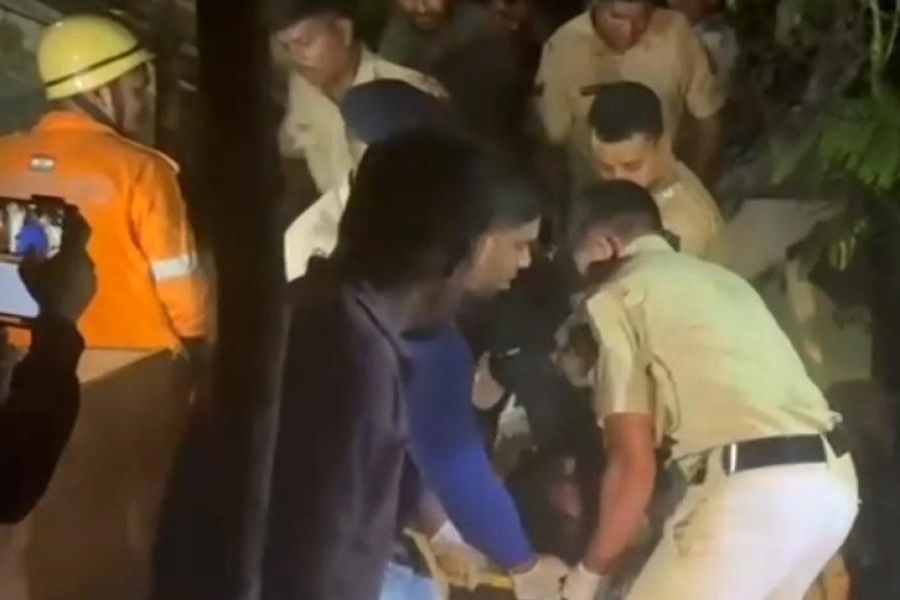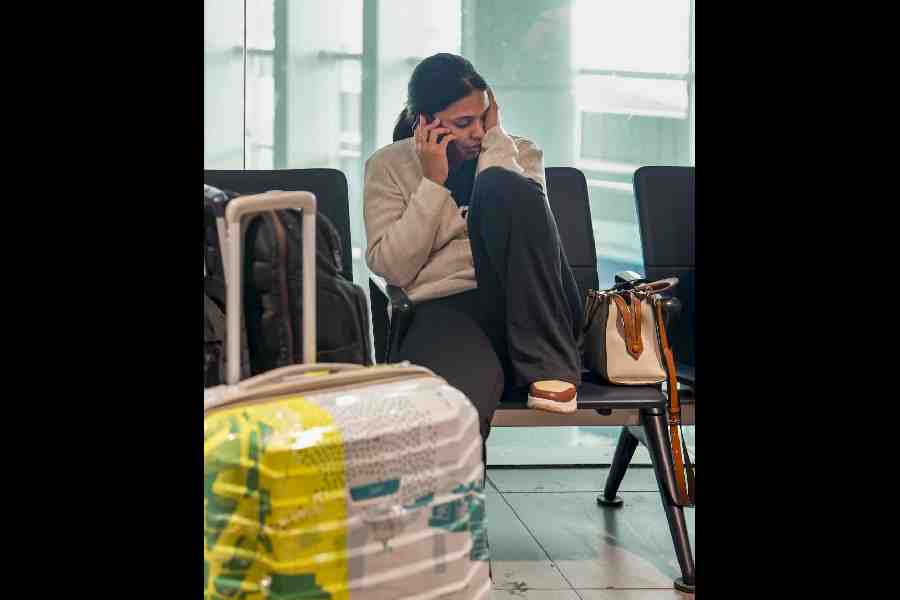
The exhibition which opened Experimenter's new space in Ballygunge Place - I Wish to Let You Fall Out of my Hands, Chapter ll - began a conversation of tentative ideas and reflective ellipses. A conversation barely defined so that your thoughts could wander into and linger over its persuasive silences, neither tied down to underlines nor straitjacketed by insistence.
Beginning at the far gallery end, it's Rathin Barman's adagio of pauses that sets the tone of the show: three works around architectural structures invoking a mirage: of homes past, of a heritage evaporating. A pensive nostalgia threads them into a bouquet of halting memories, retrieved in accidental excerpts, as it were. Thus heft, even the heft of a large, intricate steel and brass framework, dissolves into a shifting optical drama of interlocked bars and planes in Defunct Architectural Space lll, as shorn of substance as his understated drawings, as weightless as the silent shadows they cast.
This teasing interface between substance and silence takes on a wry levity in Ayesha Sultana's suite of sentient little shapes, bands, lines and colour fields on paper. Discs rolling or poised in binary balance; sticks skipping into zigzag positions to hold gossamer fences; firm black stakes, wriggly little strands, flying scraps of watercolour, nudged into winking, kinetic play. Adip Dutta's enquiry into matter also passes through a minute filter. It breaks down debris and discards into weaves of random flecks, speckles, finely-tuned smudges and quick, short dashes in ink, that are tactile and tenuous by turns. These Unidentified Sights are little maps in deceptive motion, limp and flat, but with interludes of depth and modelling. Unidentified because, seen everywhere, they are lost in anonymity, with neither contour nor facet to give away their address.
The space that Bani Abidi ventures into is fraught and fragile with pain, longing, memory refracted through the bloodied battlefields of the First World War, which claimed some 74,000 unsung Indian soldiers, many forcibly recruited from the Punjab. In this sound installation, the war-time ballads of Punjab's women, collected by Abidi, flow from the voice of singer Amarjit Chanda, counterpointing heart-rending text: letters written by some of the soldiers in Gurmukhi and Urdu. Letters that never reached home.
And then there's Moyra Davey's film, Hemlock Forest. The uneasy coupling of contraries in the title-the poisonous and the pristine, suggestive of suicide and solace-warns you that here, too, is a fraught and fragile space, oppressively intimate and perversely exposed at the same time. Her obsessive need to record her troubled thoughts, both oblivious and aware of an audience, is strangely disturbing. Beyond her acknowledged debt to the Belgian filmmaker, Chantal Akerman, who committed suicide during the making of this film, you can see how Goddard has influenced her creative strategy.
Samson Young's sound drawing, however, remains rather abstruse without the music it must partner, though its fleeting marks and frantic scribbles aren't without an appealing capriciousness. But the sketches of that remarkable elder, Krishna Reddy, and his lone bronze, recall the attenuated figures of his prints, teetering precariously on a divide between organic life and inanimate object. A divide his sculpture seems to question, with the human form resembling a non-living structure.
Lastly, Julien Segard's striking series is a free-wheeling tête-à-tête with the idiom of assemblage, collage and papier collé that takes you back to Picasso and Braque. Fleeting references to representation are guilefully fractured by the cobbling of abstract shapes into dissonant rhythms, the accent being on browns, white and black. While the wall assemblage mixes illusory depths, movement and patterns, the small works - particularly where paper strips are scattered - appear nonchalantly, infectiously, impromptu.










